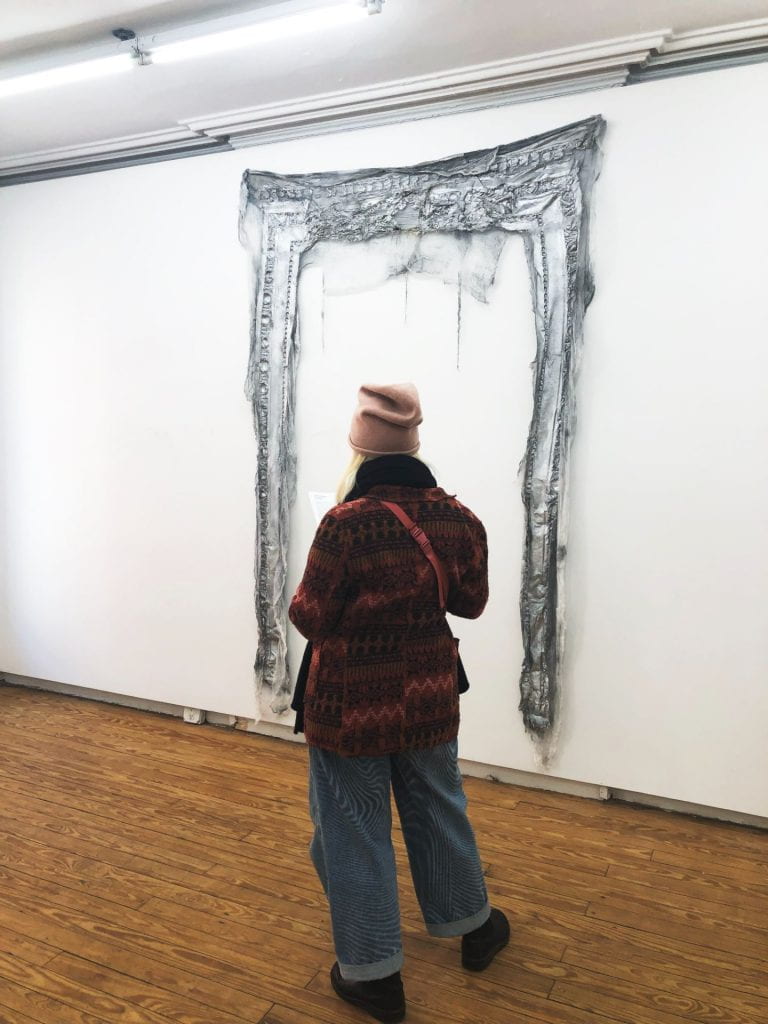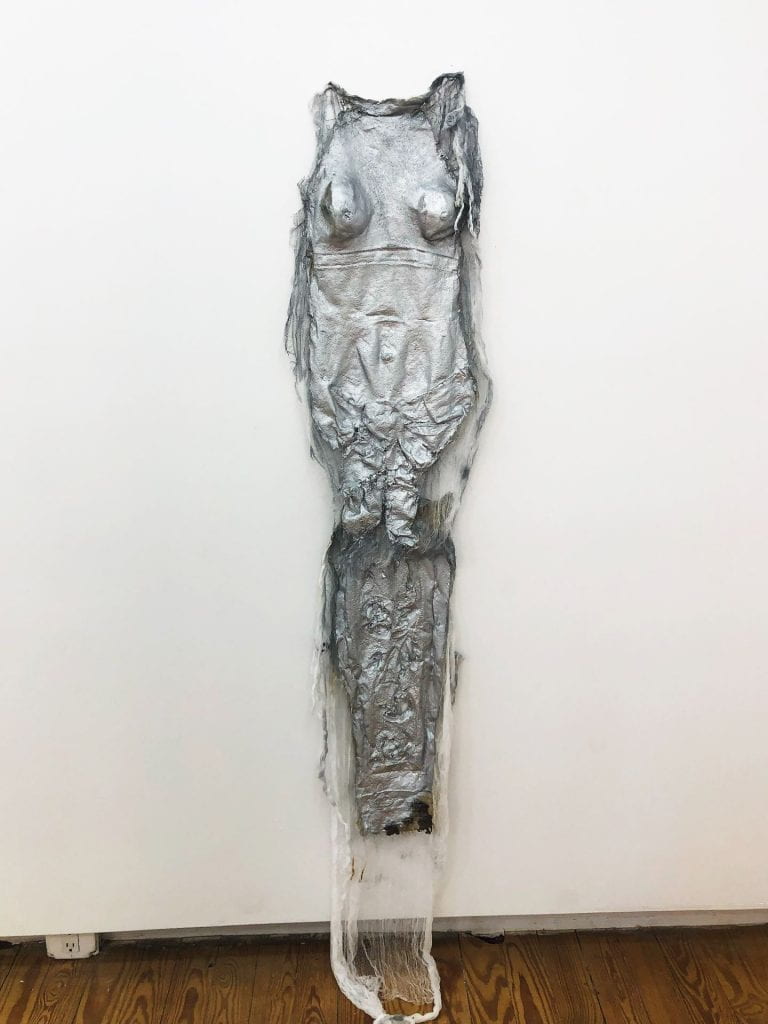
We started our day with a warm cup of coffee at the intersection of East Broadway, Canal Street, and Essex Streets. Graffiti on the tall building across from us reads “Forward,” indicating it was the former home of the Jewish Daily Forward newspaper, originally founded in 1897. Even though the building was built long ago, the words inscribed on its façade speak to the pace of the city and the Lower East Side: always chugging forward.
We walked a couple of blocks and arrived at the Eldridge Street Synagogue. On our walk and in the synagogue, old and new intermingle with little distinction. Beyond the stunning sight of the stained glass window co-designed by contemporary artist Kiki Smith, the synagogue gave us a glimpse into a different Lower East Side. Between 1881 and 1917, over 2.7 million Eastern European Jews sought shelter from persecution overseas. Many of them settled on the Lower East Side. This area was once “the world’s largest Jewish city.”
Walking along the sidewalks of “Dimes Square” – a corner of the LES currently named after a popular restaurant – it is hard to imagine a time when the LES was even more crowded. These streets – now filled with bars, restaurants, and coffee shops – were once home to thousands of newcomers to the United States. One cannot help but wonder what it was like back then.
In fact, we got a glimpse of what it was like when visiting the Tenement Museum. It was common for a family of ten to live in a 325 square-foot apartment, the guide at the museum said. The building was created during the height of immigration in the 19th century. Left untouched since 1941, we looked around, wondering where everyone slept and what happened to these families.
Suddenly, upon leaving the museum, we came across a Starbucks. It seemed like a portal had just closed behind us. The contrast between the old New York City described by Jacob A. Riis and the new venti latte laden Lower East Side is quite interesting to experience first-hand.

Yet, when I think of that day, what I’ll probably remember most are the sculptures we encountered by artist Alix Vernet at Helena Anrather Gallery. The gallery, one flight up in a tenement residential building, featured structural pieces. These sculptures, made of cheesecloth, latex, and spray paint, were suspended from the ceiling and pinned to the walls for display. Vernet casts the delicate ornamental flourishes of old tenement buildings facing the threat of re-development. By doing so, she bridges past and present. Her work, like much of that day, is a reminder of the fragility of history.

